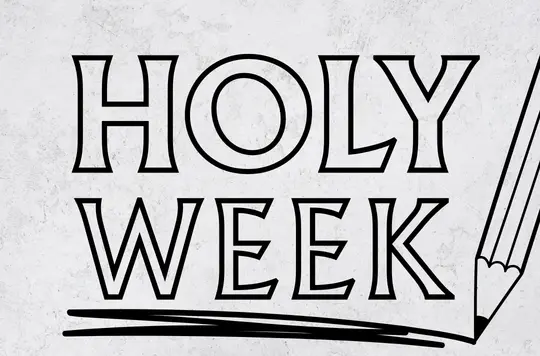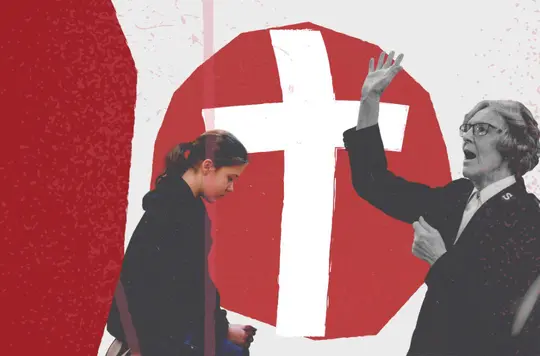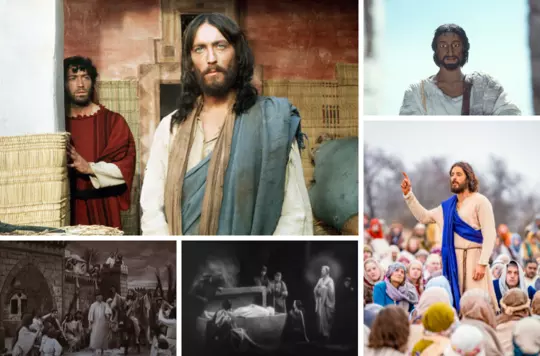12 April 2025
John 19: Jesus is crucified
Major Nigel Bovey
John binds Jesus to the Passover lamb, writes Major Nigel Bovey.
Key texts
Increasingly, social media is becoming antisocial media. Last August, a Prospect magazine article described one platform as ‘a cesspit of racism, bullying and unpleasantness’. It is time, therefore, for increased critical discernment of the written word – it’s not just what’s being said that counts but who is saying it and why. This principle also applies to the interpretation of Scripture.
A survey of the familiar Gospel accounts of the Crucifixion reveals stark contrasts between the similar accounts of the Synoptic Gospels – Matthew, Mark and Luke – and the way John tells it.
The Synoptic Gospels have Simon of Cyrene carrying the cross, Christ’s followers – with no mention of his mother – watching from a distance and a centurion proclaiming Jesus’ divinity.
By contrast, in John, Jesus carries ‘his own cross’ (v17), his mother and others are ‘near the cross’ (v25) and the centurion is absent. There’s also exclusive mention of Sanhedrin member Nicodemus (v39), whose conversation with Jesus about eternal life John has previously documented (see John 3:1–21).
What is John’s angle? Whereas the Synoptic writers focus on what Jesus says and does, John focuses on who Jesus is.
Jesus is the Word become flesh who ‘made his dwelling among us’ (John 1:14). Throughout the rest of his Gospel, John expands on the idea that the flesh-and-blood Jesus is the divine Son of God. He does so by emphasising eight signs – sēmeion – that point to Jesus’ divinity: Jesus’ seven ‘I am’ statements and his sacrifice.
Central to John’s framing of his who-is-Jesus narrative is the annual celebration of Passover (see Exodus 12). Exclusively, John records John the Baptist describing Jesus as ‘the Lamb of God, who takes away the sin of the world’ (John 1:29). Just as the people of Israel were spared the over-passing wrath of God because they sheltered behind and beneath the blood of spotless lambs, so the sacrifice of the sinless Jesus would become the means of universal salvation.
Pause and reflect
- ‘On Calvary’s tree, the King of Glory languished,/ Held not by nails, but by undying love’ (SASB 193).
John mentions three Passover festivals. At the first, Jesus cleanses the Temple and John notes that ‘many people saw the signs he was performing and believed in his name’ (John 2:23).
As the second approaches (see John 6:4), Jesus feeds 5,000 people. Some beneficiaries of this miracle are convinced that Jesus is the Messiah: ‘Surely this is the Prophet who is to come into the world’ (John 6:14).
Who is Jesus? Exclusively, John mentions ‘the Prophet’. He does so four times, here and in John 1:21, 1:25 and 7:40. The Prophet is a messianic figure who appears in Deuteronomy 18:15, where God promises to ‘raise up unto thee a Prophet from the midst of thee, of thy brethren, like unto me’ (King James Bible).
John describes the advent of the third Passover – the period of our study passage – as the time when ‘Jesus knew that the hour had come for him to leave this world and go to the Father’ (John 13:1).
Our study passage begins: ‘So the soldiers took charge of Jesus’ (v16). By then saying that Jesus is ‘carrying his own cross’ (v17), John depicts Jesus not as a hapless victim but as a knowing participant. Just hours previously – in chapters 13 to 17 – Jesus had prepared for the ultimate Passover by washing feet, breaking bread and leading his disciples in prayer.
John then depicts Jesus in a series of vignettes in verses 18 to 27 that reveal perceptions of who Jesus is. Jesus is regarded as a common criminal, the ‘King of the Jews’ (v19), a loser and a caring son.
Three times in his Gospel, John describes Jesus’ investment in the timing and manner of his destiny with the word ‘knowing’.
With a crowd describing him as ‘the Prophet’, Jesus ‘knowing that they intended to come and make him king by force, withdrew’ (John 6:15). It was not the time or the place.
When the authorities arrive in Gethsemane to arrest him, Jesus ‘knowing all that was going to happen to him, went out and asked them, “Who is it you want?”’ (John 18:4). It was time.
In verse 28, ‘knowing’ indicates that, even in extremis, Jesus was in control. He knows he is on course – obedient to the demands of the bitter ‘cup the Father has given me’ (John 18:11). At last, Jesus knows that ‘everything had now been finished’ (v28). It was time.
In verse 29, John exclusively mentions Jesus being offered a wine-soaked sponge from a stalk of hyssop. Here, John further references Passover. It was with hyssop dipped in lambs’ blood that Moses was instructed to daub the door frames of Israelite houses on the night God would pass over them (see Exodus 12:22).
Pause and reflect
- Lamb of God, who takes away the sin of the world, have mercy on me.
Having drunk, Jesus utters: ‘It is finished’ (v30). This is more than a personal acceptance of death, it is a statement of mission accomplished.
Further to the Passover paradigm, four times in this passage – the casting of lots (see v24 and Psalm 22:18), the offering of vinegar (see v29 and Psalm 69:21), the non-breaking of bones (see v36 and Psalm 34:20) and the piercing of his side (see vv34,37 and Zechariah 12:10) – John sees Jesus as the fulfilment of God’s word.
From Gospel beginning to end, Jesus is the Word who became flesh and blood, so that the world could be saved through his broken flesh and his love-spilt blood.
Pause and reflect
- Lord Jesus, you are the living Word of God, the unfiltered fulfilment and fulfiller of divine truth, knowledge and wisdom. May my life speak for you, of you and like you.
Bible study by

Major Nigel Bovey
Discover more

Resources to support intentional moments of reflection this Holy Week and inspire courageous love as we look to the love of Jesus this Good Friday and Easter Sunday.

Place yourself in the story with these journal prompts based on the Moments of Meditation resource.

Devotions, articles and resources to help you journey through Lent and celebrate Easter.

Ivan Radford explores portrayals of Jesus and the events of Easter on film and TV.
